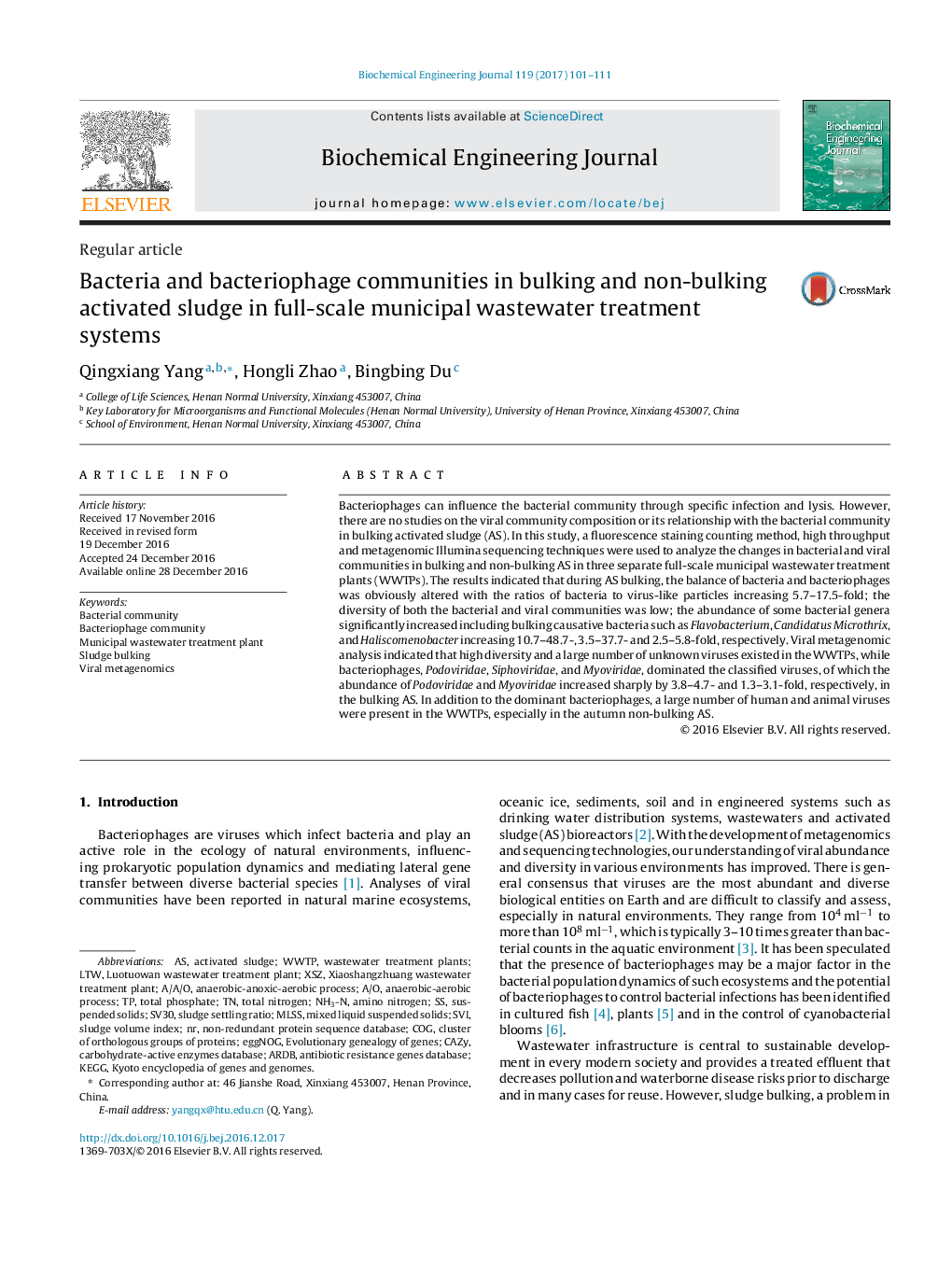| کد مقاله | کد نشریه | سال انتشار | مقاله انگلیسی | نسخه تمام متن |
|---|---|---|---|---|
| 6450425 | 1415996 | 2017 | 11 صفحه PDF | دانلود رایگان |
- The bacterial and viral communities were studied in bulking and non-bulking AS.
- The relative abundance of bacteria and virus-like particles varied in the bulking AS.
- The diversity of bacterial and viral communities decreased in the bulking AS.
- The abundance of some bulking causative bacteria increased sharply in the bulking AS.
- Two dominant families of bacteriophages increased sharply in the bulking AS.
Bacteriophages can influence the bacterial community through specific infection and lysis. However, there are no studies on the viral community composition or its relationship with the bacterial community in bulking activated sludge (AS). In this study, a fluorescence staining counting method, high throughput and metagenomic Illumina sequencing techniques were used to analyze the changes in bacterial and viral communities in bulking and non-bulking AS in three separate full-scale municipal wastewater treatment plants (WWTPs). The results indicated that during AS bulking, the balance of bacteria and bacteriophages was obviously altered with the ratios of bacteria to virus-like particles increasing 5.7-17.5-fold; the diversity of both the bacterial and viral communities was low; the abundance of some bacterial genera significantly increased including bulking causative bacteria such as Flavobacterium, Candidatus Microthrix, and Haliscomenobacter increasing 10.7-48.7-, 3.5-37.7- and 2.5-5.8-fold, respectively. Viral metagenomic analysis indicated that high diversity and a large number of unknown viruses existed in the WWTPs, while bacteriophages, Podoviridae, Siphoviridae, and Myoviridae, dominated the classified viruses, of which the abundance of Podoviridae and Myoviridae increased sharply by 3.8-4.7- and 1.3-3.1-fold, respectively, in the bulking AS. In addition to the dominant bacteriophages, a large number of human and animal viruses were present in the WWTPs, especially in the autumn non-bulking AS.
Journal: Biochemical Engineering Journal - Volume 119, 15 March 2017, Pages 101-111
